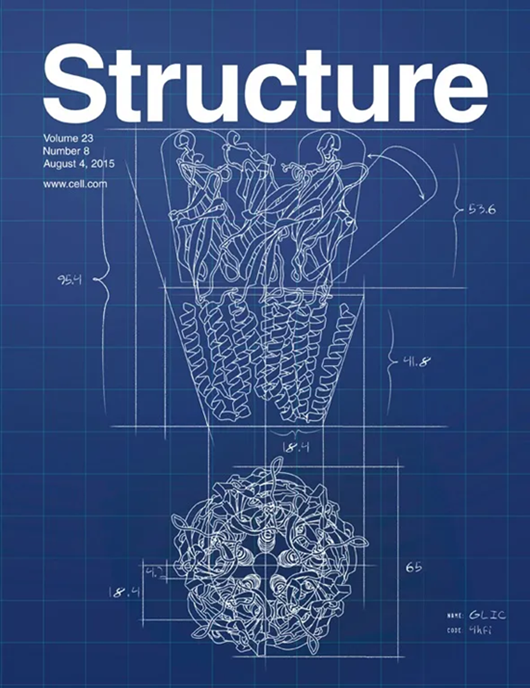病毒新杆菌II型SMC Wadjet复合物的结构
IF 4.3
2区 生物学
Q2 BIOCHEMISTRY & MOLECULAR BIOLOGY
引用次数: 0
摘要
染色体复合体的结构维护是促进关键细胞功能的基本DNA折叠马达,包括染色体分离和DNA修复。Wadjet系统是一种原核SMC复合物,专门用于对质粒的细胞免疫。I型Wadjet系统通过DNA挤压-裂解反应限制质粒。另外两种Wadjet类型(II型和III型)也已被确定,然而,它们的分子特征尚不清楚。在这里,我们重建了一个具有代表性的病毒新杆菌II型Wadjet系统。我们发现该系统与I型具有相同的底物选择和解理特性,但具有独特的结构特征,包括长肘部-远端卷曲线圈,无通道铰链和串联KITE亚基。这些特征有助于识别Wadjet系统家族中共同和独特的建筑元素,并提出了有关原核SMC复合物进化的有趣问题。本文章由计算机程序翻译,如有差异,请以英文原文为准。

Structure of a type II SMC Wadjet complex from Neobacillus vireti
Structural maintenance of chromosome complexes are essential DNA-folding motors that facilitate critical cellular functions, including chromosome segregation and DNA repair. Wadjet systems are prokaryotic SMC complexes specialized in cellular immunity against plasmids. Type I Wadjet systems restrict plasmids via a DNA extrusion-cleavage reaction. Two other Wadjet types (II and III) have also been identified, however, their molecular characteristics are unclear. Here, we reconstituted a representative type II Wadjet system from Neobacillus vireti. We show that this system shares substrate selection and cleavage properties with type I but exhibits distinctive structural features, including a long elbow-distal coiled coil, a channel-less hinge, and a tandem KITE subunit. These features help identify the common and distinguishing architectural elements in the family of Wadjet systems and raise intriguing questions about the evolution of prokaryotic SMC complexes.
求助全文
通过发布文献求助,成功后即可免费获取论文全文。
去求助
来源期刊

Structure
生物-生化与分子生物学
CiteScore
8.90
自引率
1.80%
发文量
155
审稿时长
3-8 weeks
期刊介绍:
Structure aims to publish papers of exceptional interest in the field of structural biology. The journal strives to be essential reading for structural biologists, as well as biologists and biochemists that are interested in macromolecular structure and function. Structure strongly encourages the submission of manuscripts that present structural and molecular insights into biological function and mechanism. Other reports that address fundamental questions in structural biology, such as structure-based examinations of protein evolution, folding, and/or design, will also be considered. We will consider the application of any method, experimental or computational, at high or low resolution, to conduct structural investigations, as long as the method is appropriate for the biological, functional, and mechanistic question(s) being addressed. Likewise, reports describing single-molecule analysis of biological mechanisms are welcome.
In general, the editors encourage submission of experimental structural studies that are enriched by an analysis of structure-activity relationships and will not consider studies that solely report structural information unless the structure or analysis is of exceptional and broad interest. Studies reporting only homology models, de novo models, or molecular dynamics simulations are also discouraged unless the models are informed by or validated by novel experimental data; rationalization of a large body of existing experimental evidence and making testable predictions based on a model or simulation is often not considered sufficient.
 求助内容:
求助内容: 应助结果提醒方式:
应助结果提醒方式:


